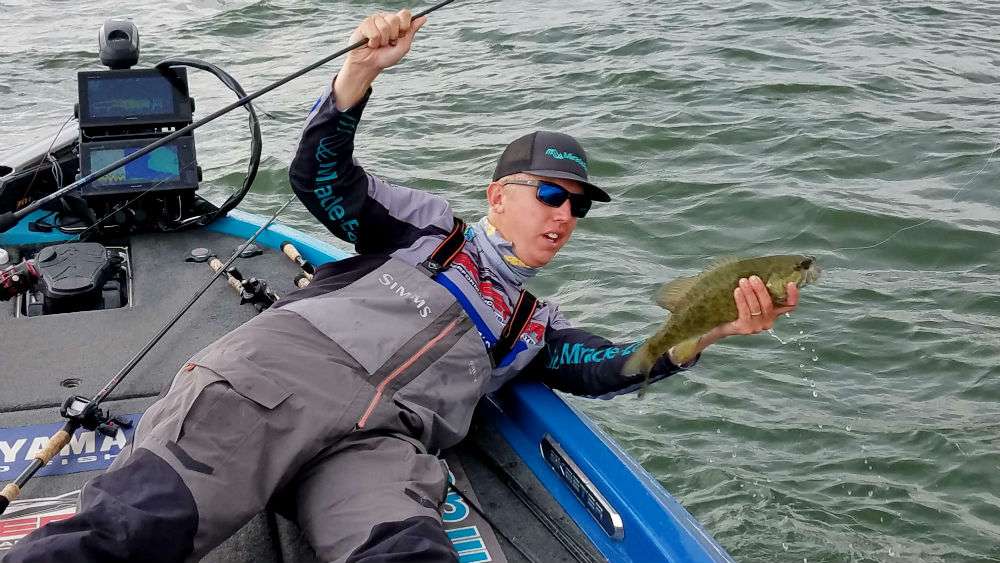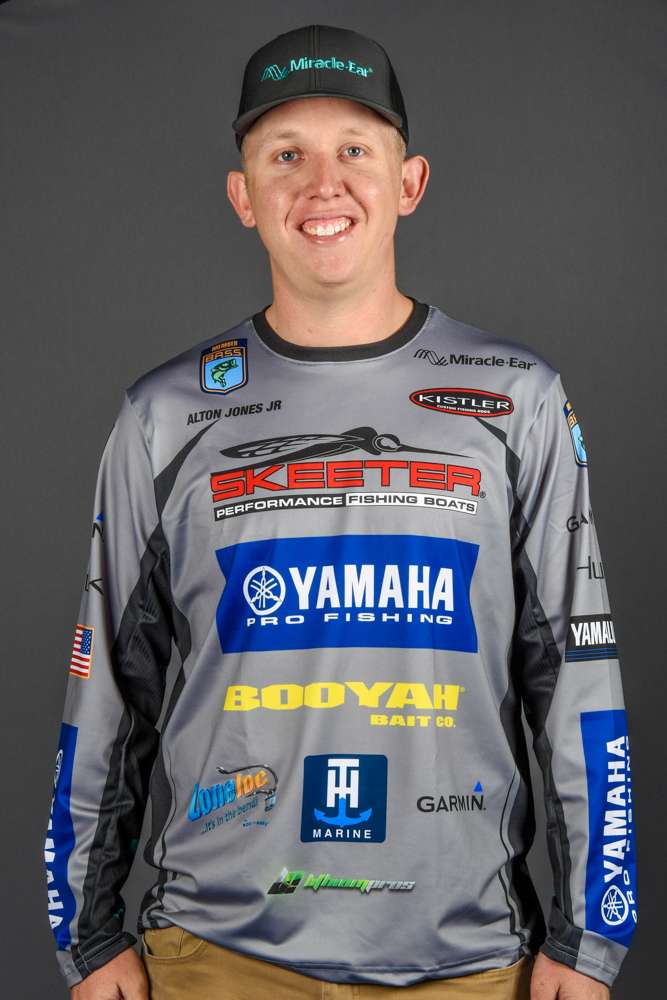
Late summertime in the is the most difficult season in the south to catch and pattern bass. That’s not to say you can’t do so; it’s just that this time of year, the conditions present significant challenges.
When fish first move offshore following the post spawn, they tend to get into tight little groups on predictable spots. But as you get later into the summer, the water temperature creeps higher. For example, right now in Texas we’re seeing water temperatures in the low to mid 90’s.
When this happens, those schools of bass break up and the fish tend to suspend. This greatly decreases the level of predictability.
One of the biggest factors you see late in the summer is a heavy thermocline. In early May, these fish go out to 30-plus feet and group up. But after that thermocline sets up, there’s no oxygen below, say, 22 feet.
This is why I really rely on my Garmin electronics so heavily, because I can actually see that thermocline. There’s a hard line of interference down to the thermocline where the thermocline sets up and then below that there’s no life whatsoever.
Knowing where the thermocline is allows you to eliminate a ton of water and really key in on the productive depth. Nine times out of 10, if you find that thermocline, the fish are going to be close to it, but not quite at it.
So, if I find a thermocline in 22 feet, I’ll start my searching in 20 feet because most of those fish will have been pushed shallower. They want to be deep, but they just physically can’t.
Now, that being said, I think the biggest mistake anglers make is being impatient with their idle time. I’m a hypocrite for saying that because I fall victim to that all the time; but I know that there’s no substitute for relying on your electronics to show you what you need to see.
We’ve all seen what it looks like when you idle over a school, but it’s hard to have the patience to continue idling for several hours. Sometimes, the search may last all day,but whenever you find that school you’re looking for, that’s when fishing gets good.
A few more summer strategy points:
1. Don’t be afraid to go old school. Especially in the south, it’s hard to beat Carolina rigging a 10-inch YUM Mighty Worm or a Ribbontail Worm. There’s something about this slow, steady presentation. If you can’t get bit otherwise, then go with what has historically worked.
2. Know your forage. When it comes to moving baits, like a scrounger, a deep diving crankbait, a spoon or a swimbait, it’s very important to know what the bass are eating.
On a major river with current, most of the time, those fish will be keying in on gizzard shad. That opens door to several large profile baits like Booyah Streak or a magnum flutter spoon — baits that match what those fish are feeding on.
On a reservoir, the fish are most likely going to be feeding on threadfin shad or bluegill. That’s when I’m going to use a dropshot with YUM Sharp Shooter worm, a small crankbait or a small jigging spoon to match that smaller baitfish profile.
3. Lastly, during the Dog Days, don’t be afraid to go dirt shallow. There are some very big fish that live shallow year-round. In my opinion, it’s bluegill. A lot of bluegill stay shallow all year and we all know that bluegill eaters are your bigger bass. Those big bass don’t want to get out and chase little threadfin, so they’ll take advantage of those shallow bluegill.
I think that in the coming events, especially in the AOY post-season, you’re going to see that turn true. I think the event on Lake Chatuge will be won dirt shallow. Hot weather and big bass — it’s a formula that can deliver the win if you’re willing to make it work.

